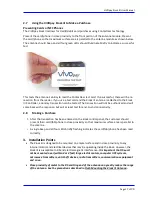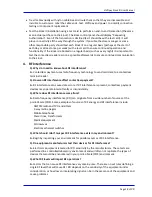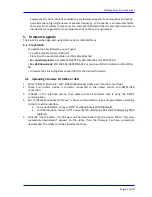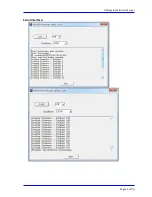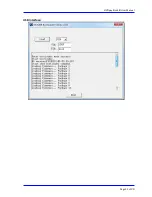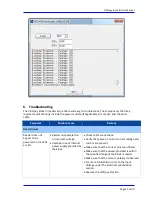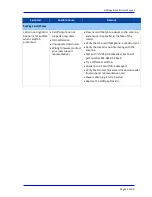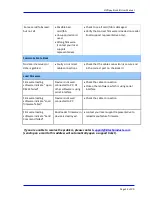
ViVOpay Kiosk III User Manual
Page 18 of
24
Tie all cables neatly with nylon cable-ties and route them so that they are inaccessible and
invisible to customers. Label the cable ends, host, ViVOpay and power, to simplify connection
testing or component replacement.
Test the Kiosk III installation using a test card to perform an end-to-end transaction (the same
as an actual purchase on the Kiosk). The kiosk control panel should display "Requesting
Authorization". Even if the transaction is declined (as it should be with a test card), it will
prove connectivity all the way through the system. If possible the store manager or some
other responsible party should test each Kiosk III on a regular basis (perhaps at the start of
each day or at least once per week) with a test card to ensure continued operation and
functionality. If the kiosk is rebooted on a regular basis (such as every night) it is important to
test the contactless reader as soon as possible afterwards to ensure continued communication
to the kiosk.
4.
RF Interference
Q. Why do I need to know about RF interference?
A. Contactless payment uses radio frequency technology to send card data to a contactless
terminal reader.
Q. How can RF interference affect contactless payment?
A. RF interference can cause data errors. If RF interference is present, contactless payment
devices may operate intermittently or inconsistently.
Q. Where does RF interference come from?
A. Radio frequency interference (RFI) can originate from a wide number of sources at the
point-of-sale (POS). Some examples of sources of RF energy and RF interference include:
AM/FM radio and TV transmitters
2-way radios, pagers
Mobile telephones
Power lines, transformers
Medical equipment
Microwaves
Electromechanical switches
Q. What should I do if I suspect RF interference exists in my environment?
A. Begin by inspecting your environment for possible sources of RF interference.
Q. Do equipment manufacturers test their devices for RF interference?
A. Electronic equipment is tested for RFI sensitivity by the manufacturers. These tests are
performed in a controlled laboratory environment and will often not replicate the types of
devices that would be encountered in your point-of-sale (POS) environment.
Q. What RF levels will impact RF operations?
A. Factors that can cause RF interference vary case-by-case. There are no set rules defining a
single RF level that will cause RFI. RFI depends on the sensitivity of the equipment under
consideration, or how low an interpreting signal can be in the presence of the equipment and
cause problems.














